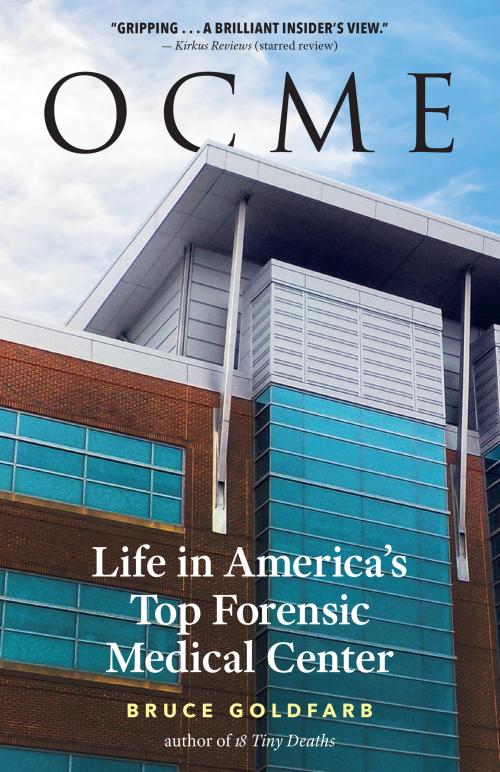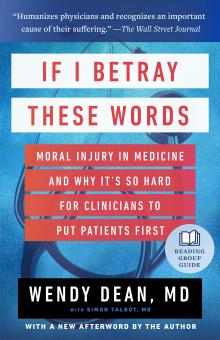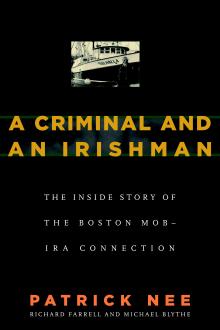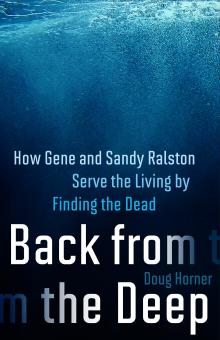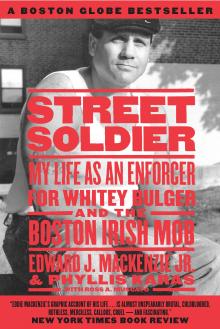Excerpt
Edward Wilson, the bulge of his service weapon visible beneath his polo shirt, stood at the front of the conference room. The seats were filled with forensic science students from a Baltimore County university. A detective sergeant in the Baltimore City Police Department’s homicide unit, Wilson is one of the few police officers in the country assigned full-time to a forensic medical center. If he isn’t busy fingerprinting in the autopsy suite, Wilson often likes to drop into my tours to tell stories and share his perspectives.
“You find a body on the sidewalk, bleeding from the head, and a baseball bat nearby,” he said to the group. “What happened?”
“He was beaten with the baseball bat,” one student tentatively asked. “Is that too obvious?”
“Maybe. Maybe not,” Wilson said. “Are there any other possible explanations for what you find there on the sidewalk?”
“He could have been playing baseball and somebody shot him in the head,” another student said.
“Okay,” Wilson said.
“He could have fallen out a window, and the baseball bat just happened to be there by coincidence,” another student said.
“Sure,” Wilson said. “Anybody else?”
“Could have been walking down the street and had a stroke, and be bleeding from the head from hitting the sidewalk,” said another voice in the conference room.
“Any number of things could have happened. The things you find at a crime scene, whether drugs or a weapon or anything else, may or may not be related to a death. As an investigator, you have to keep an open mind and gather all the information that you can. Don’t make assumptions. You don’t know until you have all the facts.”
A body with three gunshot wounds seems like an obvious homicide. But not necessarily. People have been known to shoot themselves multiple times taking their own life, even when shot in the head. Gunshot wounds aren’t always immediately fatal. A person can survive for minutes, giving them time to try again. In a homicide, the victim could have been shot after being strangled or killed by a blow to the head.
Things are always clear and definitive on the forensic science dramas. The medical examiner does an autopsy and figures out the cause of death. End of scene.
Real life is often more messy and complicated. An altercation may begin with an argument that leads to shoving and grappling, which escalates to punching with fists. One of the participants may pick up a nearby bottle or hammer and use it as a weapon of opportunity. A victim may be kicked, strangled, stabbed, or shot in any combination. Sometimes, for good measure, the victor of the fight sets the loser on fire. A body may come in with many different injuries. The medical examiner’s task is to determine which injuries are superficial, which are serious but not lethal, and which are responsible for causing a person’s death.
Deaths are more difficult to figure out when trauma isn’t involved. A person is found deceased on their kitchen floor, with no signs of injury or foul play. Anything could have happened; heart attack or stroke, some other acute medical condition, drug intoxication or some other kind of poisoning. The possibilities are limitless. These cases can be the most challenging, requiring the most thorough examination; toxicological testing, looking at tissue slides under a microscope, and consultation with neuropathology and cardiac pathology. Every potential avenue has to be considered.
I’ve heard forensic pathology described as the purest form of medical practice. Medical examiners don’t have all the instruments and gadgets that help doctors diagnose patients in the clinical setting; pulse oximetry, electrocardiogram, and various beeping devices. You can’t ask questions of the dead. How did you feel before you collapsed? Did you feel pain anywhere? Were you dizzy or lightheaded? This would be useful information.
Forensic pathologists rely on what they see (the word autopsy means “look for yourself”) and what they know. To assist them, they have forensic death investigators gathering information for them from any source available. On the crime dramas, FIs are in the middle of the action, processing evidence in the pursuit of justice. In reality, they spend a lot of time on the phone. FIs talk with next of kin and primary care providers to get a medical history, social history, and other details about the decedent. These days, there is an increasing amount of digital information — security video, text messages, browser history. Devices such as Tasers and automated defibrillators retain recorded data that can be printed out. All of this is acquired for the medical examiner.
One of the most important sources is a medical record, particularly if somebody was in a doctor’s care or died under sudden and unexplained circumstances. Ordinarily, requesting a decedent’s medical record is routine. COMAR requires all hospitals to designate an agent, usually the head of medical records, to respond to medical examiner requests 24 hours a day. Since the medical examiner is the attending physician, he is entitled to the deceased’s medical record, just as any patient’s medical record follows along when changing doctors.
The OCME doesn’t need a subpoena or signed permissions to acquire a decedent’s medical record. Just ask, and it shall be received. Shorter emergency department records may be sent by fax or email, while more voluminous medical records are shipped on disk or in thick envelopes by express delivery.
That’s how it’s supposed to work. But sometimes a doctor or health facility is reluctant to provide a document, usually because it is evidence that exposes them to liability — a civil suit or regulatory sanction.
When FIs or secretaries hit a wall in an attempt to obtain a record, they’d turn to me and my role gave me the opportunity to exercise my natural-born talent for indignation.
Dr. John Stash, a tall and lanky medical examiner from Texas, came to me about a problem he was having with a nursing home. An elderly woman with dementia was beaten by a health aide in a nursing home, and subsequently died. The nursing home refused to provide a copy of the incident report about the assault. Stash was not willing to sign the death certificate until he had the incident report in the case file, even though he knew what the report said.
“They probably don’t want to hand over the incident report because the family is likely to file a lawsuit,” he told me. “Not my problem. The assault isn’t documented until I have that incident report. I need that piece of paper.”
When acquiring information from reluctant sources, the tools at the disposal of the medical examiner are limited. The OCME can obtain an administrative subpoena for records, but that is a time-consuming process involving the Attorney General’s office and the Secretary of Health.
I called the nursing home and spoke with the medical records clerk, who referred me to the facility’s administrator. The administrator said that the incident report was “being reviewed.” With all the authority I could muster in my voice, I spoke slowly, enunciating each word clearly to let the full weight of what I said sink in.
“You are delaying an official death investigation by the State of Maryland, and possibly a criminal investigation,” I told the administrator. “There may be consequences for interfering with an official carrying out their duties.” It was a bluff, but it seemed plausible that such a law is on the books. In any event, it worked. The incident report was faxed over within minutes.
I became the OCME’s chief kvetcher, taking satisfaction in twisting arms to get recalcitrant sources to do the right thing. Fowler pointed out to me a provision in the Annotated Code that could be useful. Section 5-312 says that “a medical examiner may administer oaths, take affidavits, and make examinations as to any matter within the medical examiner’s jurisdiction.”
Administering an oath? That could be fun. I could work with that. Something about attesting to facts and signing a document under penalty of perjury has a way of sobering people up.
I used this approach for the first time with an arson investigator with a county fire department in the Washington suburbs. The medical examiner had been waiting for the arson report — which would determine whether a death was an accident or homicide — for almost a year. Repeated entreaties to the investigator and his supervisor were fruitless.
“We need the arson report on this case,” I told the investigator over the phone
“I’ll get it to you by the end of the week,” he said.
Get off your ass and do your job. “Not good enough,” I said. “This report is delaying an official death investigation by the State of Maryland and possibly a criminal investigation. How soon can we get your report?”
“Like I said, by the end of the week,” he replied.
“That doesn’t work for us,” I told him. “Tell you what, we’ll take the report verbally under oath. How soon can you get here? If you want, I can have the State Police give you a ride right now.”
That, too, was a bluff. But it got his attention. I heard him cover the phone and whisper to somebody else in the room, “Can they really do that?”
Apparently, the prospect of riding in a cop car to give an affidavit under oath broke the logjam. He came back to me and said, “Fine, I’ll work on it right now.”
The arson report was in the medical examiner’s hands that afternoon.

